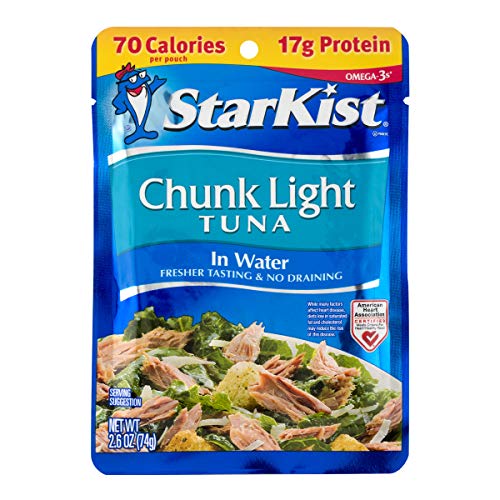Exploring the Diverse Therapeutic Landscape of Glucagon-Like Peptide-1 Receptor Agonists
In the initial article of this series, we explored the role of "glucagon-like peptide-1 receptor agonists," commonly known as GLP-1 agonists, as a medication class prescribed for diabetes management and weight loss. To recap, these medications function by mimicking the action of the naturally occurring hormone GLP-1 in our bodies.
Previous installments focused on the specifics of semaglutide, the active ingredient in Ozempic® and Wegovy®. Now, our focus expands to encompass a broader discussion about various medications within this class, which have been used for years and are currently undergoing research. Although these medications share a common classification and some similarities, we will explore their distinctions concerning effectiveness, safety profiles, and potential side effects.
Liraglutide (Victoza®, Saxenda®): A Versatile GLP-1 Agonist for Weight Loss and Diabetes Control
Liraglutide was the first GLP-1 to enter the market by the United States Food and Drug Administration (FDA) in January 2010. Initially, it was only approved for diabetes management with the brand name Victoza. In December 2014, liraglutide was approved for treating chronic weight management with the brand name Saxenda. Victoza and Saxenda are owned and manufactured by the pharmaceutical company Novo Nordisk. Liraglutide is injected daily and starts at 0.6 mg daily. Each week, the daily dose can be increased as tolerated to a maximum dose of 3 mg for weight management and 1.8 mg for diabetes control.
Dulaglutide (Trulicity®): A Weekly GLP-1 Agonist for Long-Term Glycemic Control
Dulaglutide is another GLP-1 manufactured by the pharmaceutical company Eli-Lilly with the brand name Trulicity. The FDA approved Dulaglutide in September 2014 for diabetes management. Dulaglutide is injected once weekly, with a starting dose of 0.75 mg weekly. The dose can be increased every four weeks to a maximum of 4.5 mg weekly.
Exenatide (Byetta®, BYDUREON BCise®): A Rapid-Acting GLP-1 Agonist for Diabetes Management
Exenatide was the first GLP-1 approved by the FDA under the brand name Byetta in April 2005 with twice daily dosing for diabetes management. Exenatide starts at five mcg twice daily and is injected within 60 minutes before the two main meals of the day (usually breakfast and dinner) at least six or more hours apart. After four weeks of treatment, the dose may be increased to 10 mcg twice daily. A weekly injectable version of this medication, BYDUREON BCise, was approved in 2017. It requires no titration and is administered at the therapeutic dose of 2 mg from the starting dose. These medications are manufactured and distributed by the company AstraZeneca.
Tirzepatide (Mounjaro®, Zepbound™): A Dual GLP-1/GIP Receptor Agonist for Weight Loss and Diabetes Control
In May 2022, tirzepatide was approved for diabetes management under the name Mounjaro, and the FDA expanded this approval to weight loss under the brand name Zepbound in November 2023 (owned by the pharmaceutical company Lilly). Both indications for tirzepatide are dosed the same way once weekly injections starting at 2.5 mg for four weeks. This dose can be increased by 2.5 mg every four weeks for additional diabetes control or to achieve weight loss goals up to a maximum dose of 15 mg once a week.
We have discussed GLP-1 receptor agonists and what role these play in the body. Tirzepatide is different because it is a GLP-1 receptor agonist and acts as a “glucose-dependent insulinotropic polypeptide” (GIP) receptor agonist. GLP-1 and GIP receptor agonists act in such a way that they increase the effectiveness of the other when used together. While the exact way they work together is not entirely understood, it is suggested that the GIP works directly on a part of the brain that causes feelings of satiety or fullness while also making the GLP-1 more tolerable.
Comparative Analysis of GLP-1 Agonists: Selecting the Optimal Therapeutic Choice
If you are considering starting a GLP-1, different things must be considered when determining which medication is best for you. What are you taking the medication for diabetes or weight loss? As discussed above, not all medications are approved for diabetes control and weight loss. Do you prefer a daily injection or a weekly injection? Consider what works best for your schedule.
When you look at studies comparing the medications against each other, they roughly stack up like this: For weight loss from least to most impressive results in clinical trials, liraglutide, semaglutide, then tirzepatide.
For diabetes control: Byetta may be best if your blood sugar increases after meals. BYDUREON BCise does not have heart-related benefits. Liraglutide, dulaglutide, and semaglutide all seem to be about the same regarding improving the risk of heart attack and stroke and improving Hgb A1c, a measure of blood glucose control. Tirzepatide has been studied directly against semaglutide and is superior in reducing Hgb A1c levels. It is being further studied to see if it also provides the cardiac protective benefits of the three previously mentioned.
For most people, cost is another significant consideration. Will your insurance cover certain medications and not others, or does it exclude all drugs in certain classes? Most insurance companies have a “formulary,” which lists the medicines covered by that specific company and the rate the company pays for them. This is sometimes called the “tier” the medication is on. If you have insurance, this formulary may be found on the company's website or by requesting a paper copy to be mailed to you, although the formulary may change as often as every three months to once a year. Some insurance companies require certain medicines to be tried before another medicine is approved, sometimes called “step therapy.” Some insurance companies will exclude an entire class of drugs, such as weight loss medicines, and not cover these medicines.
Another consideration is, unfortunately, access. Most of these medications are on the critical shortage list and expected to remain there until at least midway through 2024, if not longer. It is good to plan on starting one medication, but if that medicine is not available at the pharmacy, it may be necessary to consider another option.
Safety Considerations and Potential Side Effects of GLP-1 Agonists
Individuals with a history of pancreatitis should avoid using any GLP-1 receptor agonist medications. Additionally, healthcare providers should refrain from prescribing these medications to individuals with a personal or family history of medullary thyroid cancer or a specific type of endocrine neoplasia. There is also a rare but increased risk of complications in the intestine called gastroparesis and bowel obstruction. For individuals with known kidney failure or insufficiency, these medicines should be used cautiously or not at all.
The GLP-1 receptor agonists may affect the mental health of a very small percentage of people who take them. This is currently being investigated. People who experience these side effects report suicidal thoughts, anxiety, feelings of panic, feeling scared, feeling depressed, and even hallucinations. The symptoms initiate when the medicine begins or the dose is increased and cease when the medicine is discontinued.
With the GLP-1 agonist-based treatments, side effects are generally similar. By far, the most common side effects are gastrointestinal, specifically nausea, vomiting, diarrhea, and constipation. These side effects seem to increase with dose increases, improve with time, and improve with lifestyle modification.
Integrating GLP-1 Agonists into Your Healthcare Plan: A Personalized Approach
This overview has covered the current GLP-1s available in the market, with the acknowledgment that ongoing drug development is a constant. A study published on December 17, 2023, highlighted a new GLP-1 drug, noiiglutide, currently undergoing human trials and demonstrating enhanced improved results compared to anything currently on the market.
Pharmaceutical companies will always try to find something new and better. One reason is to try to improve patient outcomes, but another is that medicines lose their patents, and companies cannot make as much money. Interestingly, Saxenda’s United States patent is set to expire, and generic versions of this medication MAY be available as early as June of 2024. Liraglutide becoming generic may make it easier to get and less expensive.
Final Thoughts: Your Health Journey with GLP-1 Agonists
When considering what medication may be the best option for you, always consider your treatment goals first. Then, research your options further before discussing those options with your healthcare provider. Studies reinforce that most people who stop taking these medications when prescribed for weight loss regain most of the weight lost within a year. None of these medications are “magic” and are all intended for a long-term treatment plan that includes diet and exercise (whether used for diabetes or weight loss).
Good luck on your health journey, and may this information be a valuable resource for your informed decision-making and well-being!
- Aronne, L. J., Sattar, N., Horn, D. B., Bays, H. E., Wharton, S., Lin, W. Y., Ahmad, N. N., Zhang, S., Liao, R., Bunck, M. C., Jouravskaya, I., Murphy, M. A., & SURMOUNT-4 Investigators (2024). Continued Treatment With Tirzepatide for Maintenance of Weight Reduction in Adults With Obesity: The SURMOUNT-4 Randomized Clinical Trial. JAMA, 331(1), 38–48.
- Garimella, S., Johnson, M., Grimshaw, A., & Kishore, S. P. (2023, March 30). Application to add GLP-1 Receptor Agonists to the WHO Essential Medicines List for Adults.
- Li, Y., Cheng, Z., Lu, W., Li, P., Jiang, H., Yang, J., Xu, J., Zhang, C., Zhang, L., Wang, Y., Bian, F., Guo, W., Yu, X., Chen, X., Zhao, D., Feng, B., Qu, S., Qin, J., Zhang, Y., Wang, L., … Mu, Y. (2023). Efficacy of noiiglutide injection on body weight in obese Chinese adults without diabetes: A multicentre, randomized, double-blind, placebo-controlled, phase 2 trial. Diabetes, obesity & metabolism, 10.1111/dom.15407. Advance online publication.
- Sodhi, M., Rezaeianzadeh, R., Kezouh, A., & Etminan, M. (2023). Risk of Gastrointestinal Adverse Events Associated With Glucagon-Like Peptide-1 Receptor Agonists for Weight Loss. JAMA, 330(18), 1795–1797.
- Zaffina, I., Pelle, M. C., Armentaro, G., Giofrè, F., Cassano, V., Sciacqua, A., & Arturi, F. (2023). Effect of dual glucose-dependent insulinotropic peptide/glucagon-like peptide-1 receptor agonist on weight loss in subjects with obesity. Frontiers in endocrinology, 14, 1095753.





















Comments
Join The Conversation...